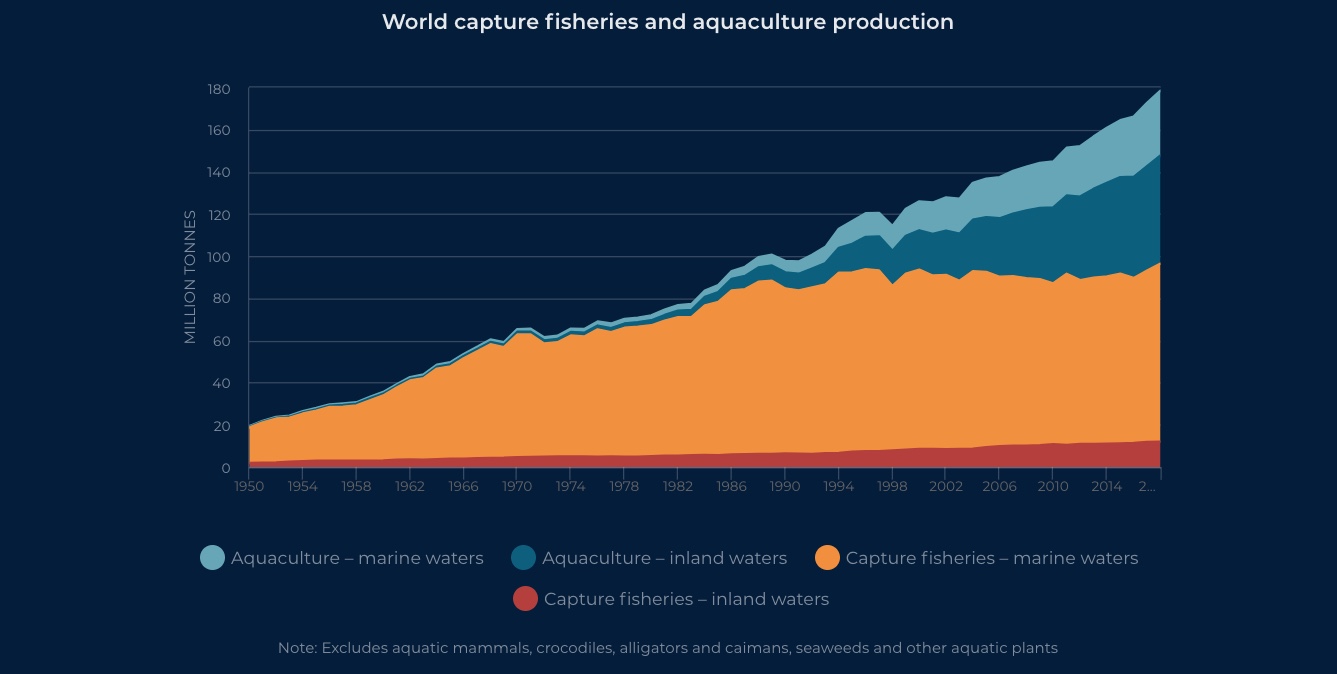Overview
HARVESTING SEAFOOD SUSTAINABLY
This goal assesses our ability to sustainably maximize wild-caught or farmed marine foods.
One of the most fundamental services the ocean provides is the provision of food. Fish provide nearly 20% of global animal protein, helping to meet the basic nutritional needs of over half of the world’s population (FAO 2020)!

(image from FAO 2020)
The Food Provision goal measures the amount of seafood sustainably harvested through any means for human consumption, and thus includes both mariculture and wild-caught fisheries (commercial, artisanal, and recreational).
A high score indicates that a region has maximized the amount of sustainably produced seafood from wild or ocean-cultured stocks. For fisheries, both over- and under- harvesting should be penalized. For mariculture, production should be at the sustainable “potential”. Mariculture production potential may be based on what is biologically possible given the conditions and amount of area available for mariculture, or alternatively, based on targets established within a region given need and the preferred allocation of ocean resources.
This goal is the combination of two subgoals: Fisheries and Mariculture. For the Global Assessment, the contribution of these two subgoals to the overall score is weighted by their total seafood yield. However, other approaches for weighting the contribution of these subgoals are reasonable.
Download Infographic